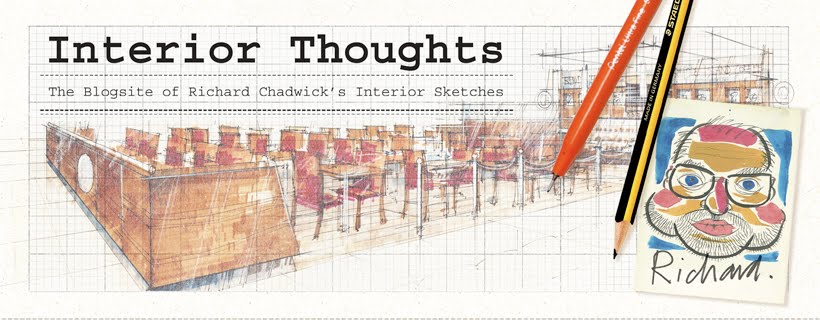.......in a couple of threads on more recent postings I have commented on the importance of context , perceived or otherwise , with regard to frescoes . They appeal to me precisely because the technique involved in their production - the application of paint to fresh plaster so that the image is bonded into the wall surface - determines that the fresco remains within its original context , subject of course to wear and tear and possible change of use of the building in which it is housed.
One of my favorite artists working in fresco is Tiepolo ; I have seen a lot of his work in Venice and the Veneto and his looseness of style coupled with his technical ability - how he sets out his ceilings in particular , with their foreshortened perspective from below , all done off scaffolding with no artificial illumination other than torches - never ceases to impress me. So I was quite intrigued when , in Paris just after New Year, I came across the Jacquemart - Andre Museum , ' famed for its collection of Italian Renaissance Art and its Tiepoloes .......
What's this ?...........................
So what's going on ?..............................
The Museum itself was originally built as the private Parisian residence for Edouard Andre and his wife, both ardent art collectors , and the house , inaugurated in 1876, was by 1892 slowly being transformed into the ' Italian Museum ' of their dreams , housing their beloved collection of Venetian and Florentine art. The Tiepolo frescos , it transpires , were acquired by Andre in 1893 and brought to Paris from the Villa Contarini at Mira , near Venice. Yes, I know that in this day and age frescos are repaired , removed , restored and probably repatriated , but this is with the aid of all the latest techniques and knowledge at the restorer's disposal - after all, Art Restoration is big business. But we are moving these frescos in 1893 and they are BIG.........and Venice is some 700 miles away, across the Alps , Did they come by sea ? Overland, up the Rhone valley ? The Orient Express rail route through to Istanbul had opened some ten years earlier, so possibly they came up by train - otherwise it would have been by horse-drawn cart. Were the frescos removed complete with part of the original wall fabric still intact ? Were they transposed to canvas , rolled and relocated that way ?
Some of the minor ceiling frescoes have certainly been remounted onto canvas and one of them has suffered
the ignominy of having a 150mm diameter hole punched in its centre , presumably where a light fitting was once accommodated , but on the whole it is certainly not apparent that they have been relocated from their original setting .
The Tiepoloes are now, of course , fully integrated into the Jacqumart Andre Museum , both as an integral part of the fabric of the building and as highlights of the collection of Italian Renaissance art ....it still seems slightly odd to me , however , to see them in this setting in a house in bourgeois Paris.
Displaced persons , no direction home............



No comments:
Post a Comment